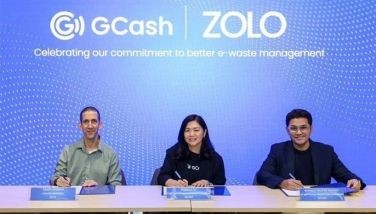Types of insurance for SME credit guarantees
December 23, 2003 | 12:00am
Enterprises in the manufacturing, mining, construction, wholesaling, retailing, service and other sectors are eligible for the insurance. The agriculture, forestry, fishery and finance sectors are ineligible.
Enterprises (individuals or corporations) that utilize guarantees for their loans are also required to meet either of the criteria following the definition of SME for each industry. Cooperatives designated in the Small Business Credit Insurance Law are also eligible for the insurance.
Guaranteed loans should be used as funds for the promotion of SMEs‚ businesses, namely for operations and equipment needed to run their business. Therefore, funds not directly linked to business operations such as funds for consumption, living expenses and speculation are not eligible for the insurance.
The maximum amount of insurance for one enterprise is fixed by insurance type. Since the amount of insurance is equal to the amount of guarantee (guaranteed loan), the maximum amount of insurance limits the total amount of guarantees that credit gurantee corporations (CGCs) can provide to one enterprise for insurance coverage. For instance, the maximum amount of insurance for ordinary insurance is ¥200 million; a guarantee of over ¥200 milion for an enterprise is eligible for ordinary insurance.
• ordinary insurance to facilitate the borrowing of funds for general purposes;
• no collateral insurance to allow SMEs to borrow money without collateral;
• special small-sum insurance to give small-scale enterprises with 20 employees or fewer, (in the trade and service industries, five employees or fewer) access to loans without collateral and guarantor;
• accounts receivable-backed insurance to allow SMEs to borrow money by using their accounts receivable as collateral;
• environmental pollution preventive facilities insurance, energy saving facilities insurance, overseas investment financing insurance and new business development insurance to promote the smooth flow of funds for specific projects without difficulties.
The type of insurance to be applied depends on the nature of the guarantee provided by CGCs.
In April 2003, the annual premium rate with respect to the above types of insurance was raised from 0.57 percent to 0.87 percent. As of 2002, two million SMEs enjoyed the benefits of the credit guarantee system (CGS) and the credit insurance system (CIS), which accounted for 32.6 percent of all SMEs in Japan. About 90 percent of the enterprises were small companies with 50 employees or fewer.
After posting a record high of Y26.6 trillion in 1998, the amount of insurance applications accepted by Jasmec drastically decreased to a normal level. Obviously, declined demand for the special guarantee system for the financial stabilization explains this abnormal trend.
With respect to insurance acceptance, no-collateral insurance accounted for roughly two-thirds of the total amount. Thus, a great number of SMEs without sufficient collateral can stay in lending markets as they try to raise funds for their business operations.
Since 1992, the balance of the insurance account has been in the red owing to the increase in insurance money paid out under the prolonged slump in the economy after the collapse of the economic bubble.
In 1998, under the severe recession, the insurance money paid out reached ¥469 billion, showing a sharp increase of 46.9 percent over the previous year. This upward trend continued and insurance payouts totaling ¥932 billion were made in 2002. On the other hand, insurance premiums decreased by 8.6 percent while recovered money increased by 9.4 percent. As a result, the balance of the insurance amount showed the biggest deficit on record, amounting to ¥611.9 billion.
(To be continued)
BrandSpace Articles
<
>
- Latest
Latest
Latest
December 13, 2024 - 12:19pm
December 13, 2024 - 12:19pm
December 4, 2024 - 4:05pm
December 4, 2024 - 4:05pm
November 25, 2024 - 9:35am
November 25, 2024 - 9:35am
October 8, 2024 - 7:00am
October 8, 2024 - 7:00am
September 18, 2024 - 10:00am
By May Dedicatoria | September 18, 2024 - 10:00am
Recommended





























